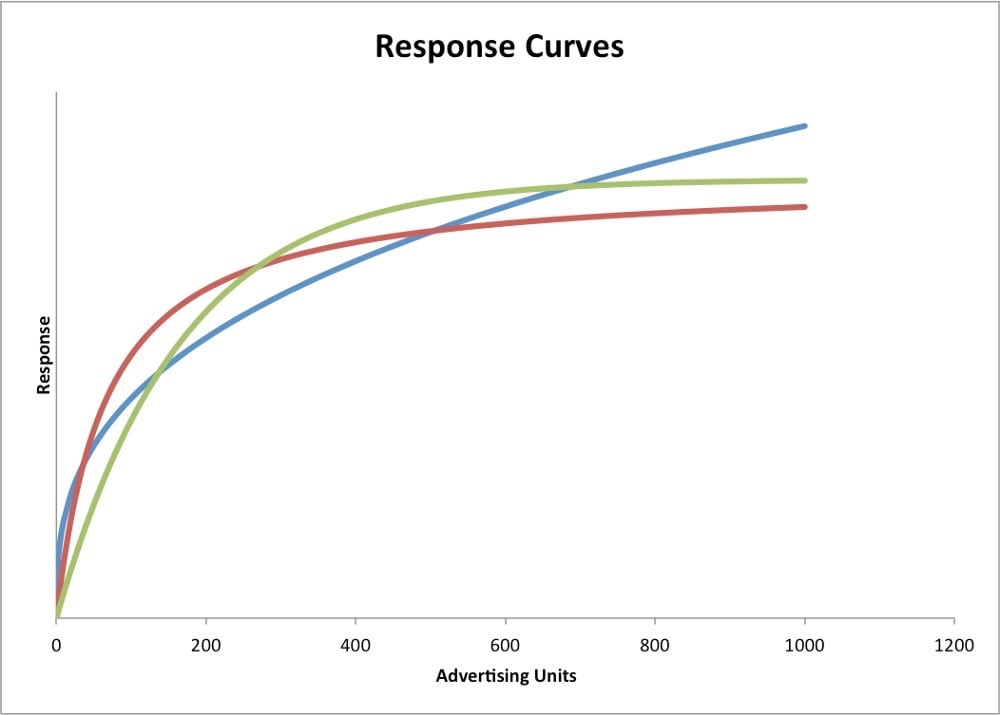One of the biggest challenges in digital marketing is the problem of attribution. With consumers being exposed to a multitude of online and offline channels, determining which channels deliver the best results becomes more challenging. However, there is a solution - the application of data science.
Marketing Mix Modeling (MMM) is an analytical approach that enables you to understand each channel's true impact on sales and make informed adjustments to your investments for optimal results. It also allows you to know the real impact that each channel has on sales and how you can adjust investment to achieve the best results.
In this article, we will uncover the secrets of Marketing Mix Modeling and go over its potential in order to empower marketers and sales professionals to confidently navigate the attribution challenge.

What Is Marketing Mix Modeling?
There's a famous quote by John Wanamaker, "Half the money I spend on advertising is wasted: the problem is that I don't know which half it is." In today’s marketing landscape, where you have an array of channels at your disposal, it is critical to determine which channels yield results and which don't.
You can track clicks in online channels and use techniques like cookies to follow user behavior, but achieving absolute accuracy can still be challenging.
In offline marketing, such as TV commercials or outdoor advertising, the task becomes much more complex as individual impressions and reactions cannot be easily tracked.
This is where Marketing Mix Modeling comes in!
Marketing Mix Modeling is a statistical modeling technique that aims to identify the relationship between marketing spend in each channel and the corresponding results (such as web visits, sales, customer acquisition, or other KPIs). By using historical data and regression techniques, you can determine the contribution of each channel to these KPIs. It's important to note that this model can only be applied if your marketing spend varies across different periods of time and channels.
By employing Marketing Mix Modeling correctly, you gain precise insights into how your investment in each channel impacts your KPIs.
To generate the formula that will help in these calculations, you can use simulations where the cost for each marketing channel is varied and multiple scenarios will be generated based on the results driving an effective marketing strategy. According to Medium, there's a linear regression equation you can use:
Sales = β_0 + β_1 * (Channel 1) + β_2 * (Channel 2)
In this equation, "sales" represents the sales volume, "channel 1" and "channel 2" refer to different marketing channels, "β_0" represents base sales (the volume of sales in the absence of marketing campaigns, driven by natural demand, loyalty, and brand awareness), and "β_1" and "β_2" are the coefficients representing the contribution of each channel to sales volume. It is important to note that there are other possible formulas.
What Data Do I Need to Apply Marketing Mix Modeling?
In order to successfully apply this marketing and sales model, it is crucial to start with the correct data. Here are the factors to consider when gathering the necessary information for these calculations.
- Sufficient and Varied Data: Marketing Mix Modeling analyzes the variations of multiple elements in a single dependent variable. Therefore, it is essential to have adequate data with enough variation to identify the impact of these variations on the variable accurately.
- Representative Data: The data collected should balance having enough information to determine the relationships between variables and truly represent your company.
- Level of Detail: The level of detail in the data determines the level of detail in the results. For instance, if you want Marketing Mix Modeling to provide insights into the performance of each channel at the store, product, or segment level, the data should be segmented accordingly.
- Noise Elimination: External factors like seasonality and economic fluctuations influence sales, web visits, and customer acquisition metrics. Therefore, refining the model by eliminating the “noise” caused by these factors is essential.
Factors to Be Taken Into Account in Marketing Mix Modeling
To correctly interpret the results of this model, two crucial factors must be taken into account: the lagged effect of marketing and sales actions as well as the concept of diminishing returns.
The Lagged Effects of Marketing and Sales
Not all marketing actions have an immediate effect. Most consumers go through a consideration or decision-making phase between the moment they recognize a need and when they decide whether to make a purchase.
As a result, there is a time lag between the launch of a marketing campaign and the recorded KPI (visit, purchase, user registration, etc.). It is essential to consider this time lag when calculating the results of each channel.
The duration of the consideration phase varies depending on the product in question. For example, the consideration time for buying lipstick differs from that of purchasing a new car. Furthermore, the time gap between exposure to a marketing channel and the decision-making process can vary across different channels. Therefore, it is recommended to test various time lapses to determine the best fit for the data.
Diminishing Returns
Diminishing returns occur when the incremental benefit decreases as the investment increases. In other words, investing more does not yield better results beyond a certain point. After that point, further advertising may become less effective or even counterproductive.
The relationship between the marketing budget and results is not linear. The objective is to determine the optimal maximum level of investment in each marketing channel.

What Results Can You Obtain With Marketing Mix Modeling?
Let's assume you have enough quality data to apply Marketing Mix Modeling. What results can you obtain? We can separate these insights into descriptive results (which explain what has happened so far) and predictive results (which aim to forecast the future).
Descriptive Results
Within the descriptive results, two types of graphs can be highly valuable for evaluating your company’s performance: contribution graphs and diminishing returns graphs.
Contribution Graphs
Contribution graphs visually represent channels contributing to your company’s growth. By translating the results of Marketing Mix Modeling into a visual model, you can quickly identify the channel’s contribution to overall revenue. Observing temporal graphs to track channel evolution and identify factors such as seasonality is also insightful. These visual representations allow you to understand the trends and assess your company's situation quickly.
Graphs of Diminishing Returns
Line charts representing a plotting curve are typically used when analyzing diminishing returns in marketing and sales. These charts provide a visual representation of the relationship between investment and returns.
Suppose we accept the theory of advertising saturation in the market. In that case, we want to ensuring that we are not investing in marketing and sales beyond the point of saturation.
To determine this, we can plot the returns for each channel and observe the curve's shape. We may discover that specific channels reach saturation quickly while others continue to generate profits even with increased investment.
By examining both the contribution and diminishing returns charts, we gain valuable insights into which channels offer the highest ROI. This information guides us to determine where to invest more or less to maximize profits. Keep in mind that the accuracy of these results depends on the quality and representativeness of the data we input.
Predictive Results
Marketing Mix Modeling is beneficial for explaining past events and for predicting the future ROI of your marketing and sales actions. While it’s crucial to approach future predictions cautiously, Marketing Mix Modeling provides a valuable tool for making informed decisions about your marketing and sales strategies.
To leverage this information, you can design investment scenarios and apply Marketing Mix Modeling to evaluate results. This allows you to optimize your budget by focusing on the most efficient channels that have yet to reach saturation.
We at Cyberclick can help you create an automated and customized algorithm tailored to your company’s unique situation, eliminating the need for manual calculations of different scenarios. This optimization helps ensure intelligent budget allocation and frees up time and resources so that you can enhance your strategy and creativity.
Responsable de la estrategia de contenidos y visibilidad en Cyberclick, con enfoque Allbound y especialización en posicionamiento SEO, GEO y automatización con IA. Gestión avanzada del CRM con HubSpot: base de datos, workflows, lead nurturing, scoring y reporting. Experiencia en marketing digital, comunicación corporativa y periodismo, uniendo estrategia, creatividad y tecnología para captar y convertir leads cualificados.
Responsible for content and brand visibility strategy at Cyberclick, with an Allbound approach and specialization in SEO, GEO (Generative Engine Optimization), and AI-powered automation. Advanced HubSpot CRM management: database segmentation, workflows, lead nurturing, scoring, and reporting. Background in digital marketing, corporate communications, and journalism—combining strategy, creativity, and technology to attract and convert qualified leads.






Leave your comment and join the conversation